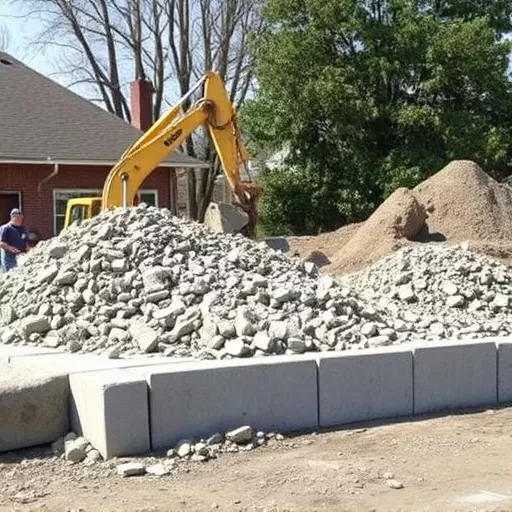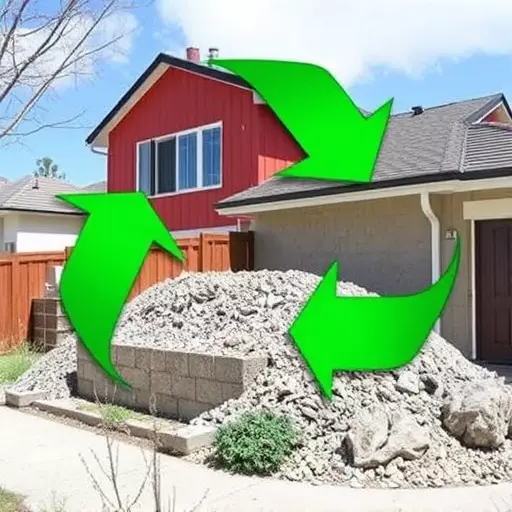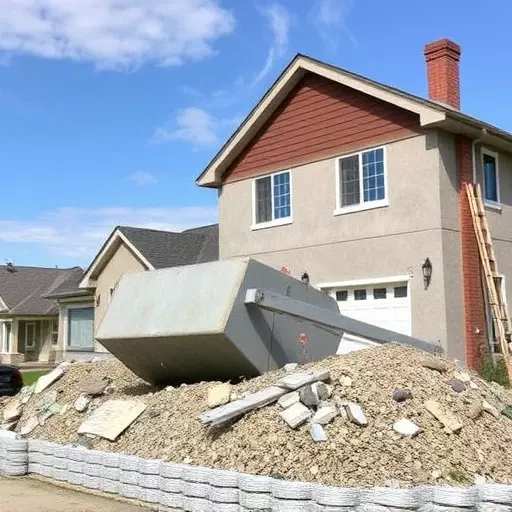Residential concrete recycling in Toledo is a sustainable solution for managing construction waste, reducing environmental impact, saving costs, and promoting a circular economy. The process involves sorting, crushing, screening, and preparing concrete debris for repurposing as aggregate. Homeowners can benefit from using recycled concrete in landscaping, driveway construction, retaining walls, and more. This guide educates residents on the benefits, process, applications, and local regulations related to residential concrete recycling, encouraging its adoption for eco-friendly and cost-effective construction practices.
In today’s eco-conscious world, understanding and adopting residential concrete recycling is not just a sustainable choice but also a smart one. This comprehensive guide delves into the multifaceted benefits of recycling concrete from home renovations to driveway removal, highlighting how it reduces environmental impact while providing cost savings. We explore the process, from preparation to final aggregate, explaining each step in simple terms. Discover diverse applications, from landscaping to new construction, and learn about the evolving technology making recycling more accessible. By navigating local regulations and choosing reliable services, homeowners can contribute to a greener future while staying within budget.
- Understanding Residential Concrete Recycling: A Comprehensive Guide
- Benefits of Residential Concrete Recycling for the Environment and Your Wallet
- The Process: How Residential Concrete Recycling Works Step-by-Step
- Exploring Different Applications of Recycled Concrete in Residential Projects
- Navigating the World of Residential Concrete Recycling: Cost, Services, and Regulations
Understanding Residential Concrete Recycling: A Comprehensive Guide

Residential concrete recycling is a process that transforms leftover or discarded concrete from construction and renovation projects into valuable aggregate for new applications, primarily in the building and landscaping industries. By understanding how this sustainable practice works, homeowners can make informed decisions about managing their concrete waste responsibly. The first step involves sorting and preparing the concrete debris, ensuring it is free from contaminants like wood, metal, or other materials. This sorted concrete is then transported to a facility equipped with specialized machinery for crushing and screening.
At these facilities, the concrete is reduced to smaller fragments, known as recycled aggregate, which can be used in various ways. The resulting material has similar properties to conventional crushed stone or gravel but offers significant environmental advantages. It reduces the demand for virgin aggregate extraction, minimizes landfill waste, and lowers carbon emissions associated with new concrete production. This comprehensive guide aims to educate residents of Toledo and beyond about the benefits and mechanisms of residential concrete recycling, encouraging them to adopt this eco-friendly practice in their construction and renovation endeavors.
Benefits of Residential Concrete Recycling for the Environment and Your Wallet

Residential concrete recycling offers significant environmental benefits, reducing the demand for new aggregate production and minimizing the ecological footprint associated with traditional construction practices. By repurposing concrete from various residential projects, including driveway removal, slab demolition, and home renovations, we can conserve natural resources and reduce landfill waste. This process not only diminishes the need for extracting virgin materials but also cuts down on energy consumption and greenhouse gas emissions linked to manufacturing new concrete.
Moreover, engaging in residential concrete recycling is financially advantageous. It provides an cost-effective alternative to landfill disposal, offering savings for homeowners and contractors alike. The process involves crushing and screening recycled concrete into aggregate, which can be used as a substitute for virgin materials in various construction applications. This not only reduces material costs but also supports the circular economy by giving new life to waste concrete, making it an increasingly popular choice for eco-conscious individuals and businesses in Toledo and beyond.
The Process: How Residential Concrete Recycling Works Step-by-Step

The Process: How Residential Concrete Recycling Works Step-by-Step
Residential concrete recycling in Toledo starts with the collection and segregation of concrete materials from construction sites, demolition projects, or home renovations. This includes concrete slabs, blocks, bricks, and even small chunks of concrete from driveway removals and landscaping projects. The first step involves crushing these materials into smaller pieces using specialized machinery like crushers and shredders. Once reduced in size, the concrete is further processed to remove impurities such as wood, metal, and other debris.
Next, the recycled concrete is screened to ensure it meets specific grade requirements for different applications. Smaller particles are often used as crushed aggregate in new concrete mixes, while larger pieces can be used as base material for roads or as backfill. The entire process aims to minimize waste and reduce the demand for virgin resources, thereby offering numerous benefits for both homeowners and the environment. This step-by-step approach ensures that residential concrete recycling in Toledo is efficient, eco-friendly, and aligned with best practices for sustainable construction.
Exploring Different Applications of Recycled Concrete in Residential Projects

Recycled concrete has a wide range of applications in residential projects, providing an eco-friendly and cost-effective alternative to traditional building materials. From landscaping to driveway construction, recycled concrete is revolutionizing the way we approach home improvement and new builds. One of its primary uses is in creating new concrete aggregates, which can be incorporated into mix designs for various residential structures, including patios, sidewalks, and garden paths. This process not only reduces the demand for virgin aggregate but also minimizes the environmental impact associated with extractive industries.
Additionally, recycled concrete is ideal for projects that require a unique aesthetic or functional aspect. For instance, it can be used to build retaining walls, adding texture and character to outdoor spaces. In flood-prone areas, recycled concrete can be strategically placed to help mitigate water runoff and prevent erosion, showcasing its versatility in addressing practical and environmental challenges. By exploring these diverse applications, homeowners and contractors in Toledo can contribute to a more sustainable construction industry while benefiting from the durability and versatility of recycled concrete.
Navigating the World of Residential Concrete Recycling: Cost, Services, and Regulations

Navigating the World of Residential Concrete Recycling: Cost, Services, and Regulations
Residential concrete recycling in Toledo and beyond offers a sustainable solution for property owners looking to reduce their environmental impact while managing construction and renovation waste responsibly. Understanding how residential concrete recycling works is essential for maximizing its benefits. The process involves collecting, crushing, and screening concrete from demolition sites or renovations, transforming it into recycled concrete aggregate (RCA) suitable for various applications. This not only diverts material from landfills but also provides a cost-effective alternative to traditional aggregates in new construction projects.
When considering residential concrete recycling, homeowners can expect a range of services from specialized recyclers. These companies often provide on-site crushing and screening using mobile crushers, ensuring minimal disruption to neighbors and efficient material processing. Local regulations play a crucial role in facilitating this process, with many areas adopting policies that encourage the use of recycled materials and support eco-conscious practices. Homeowners interested in residential concrete recycling should research local guidelines, select reputable recyclers, and explore DIY options for smaller projects to contribute to a more sustainable future while managing their construction waste responsibly.


